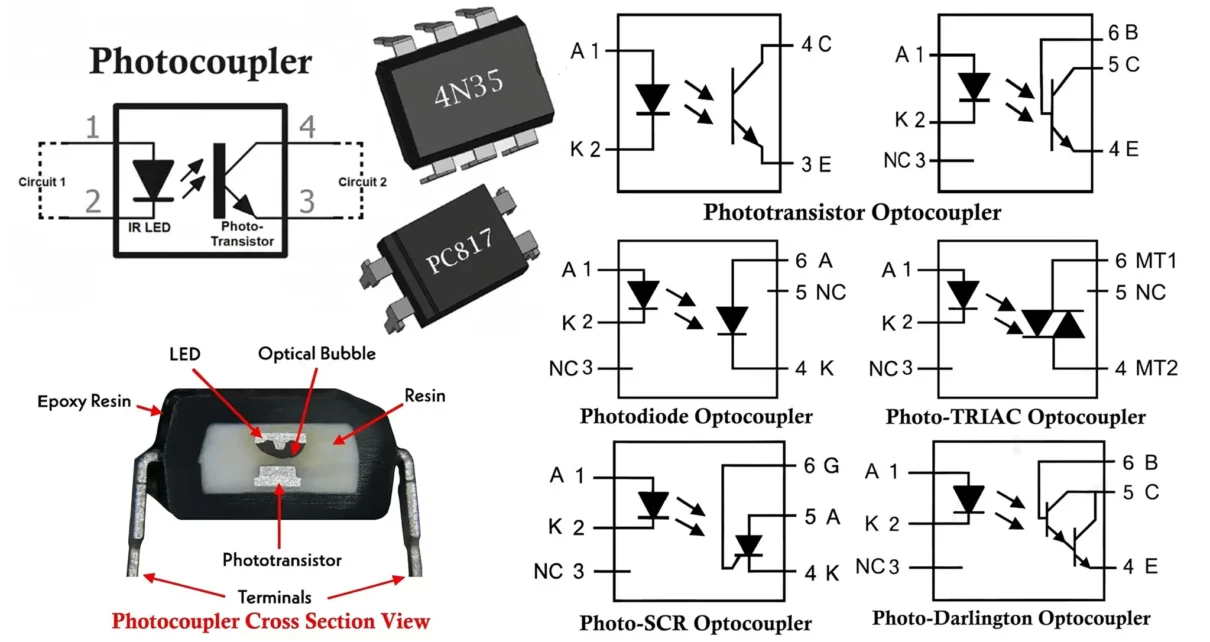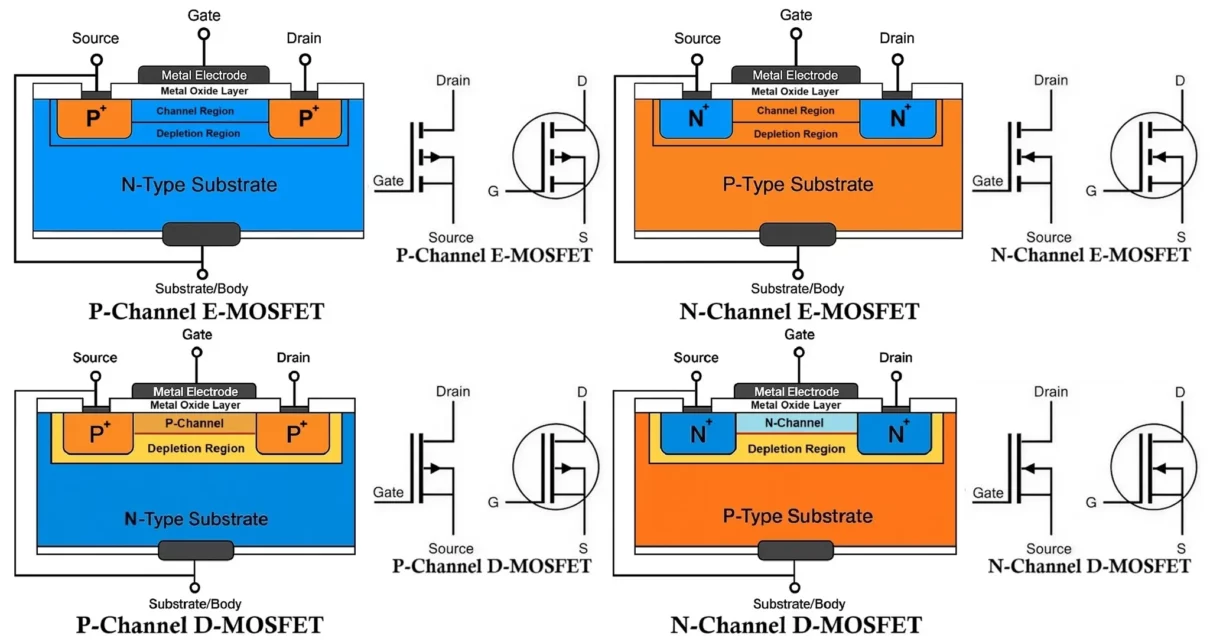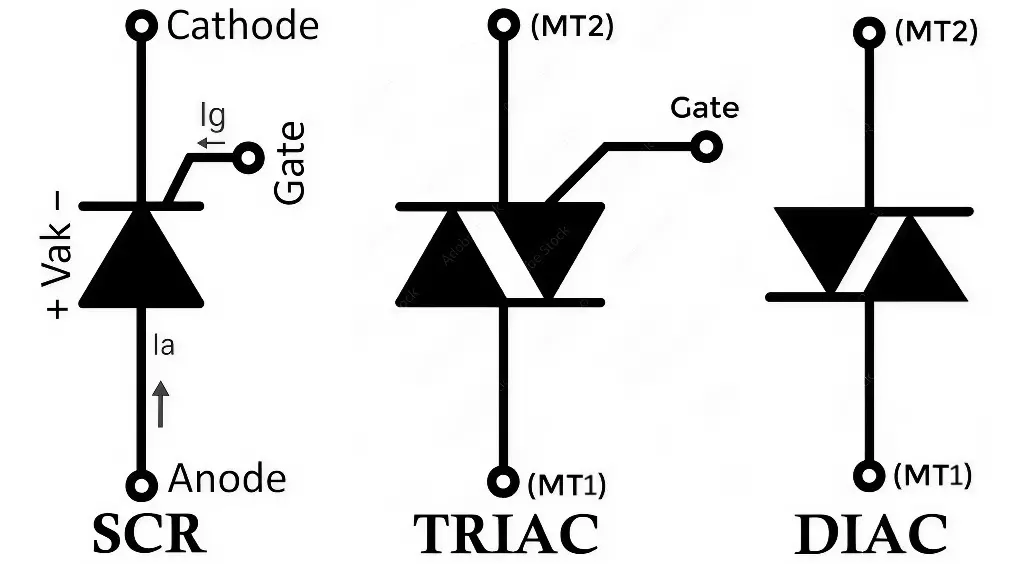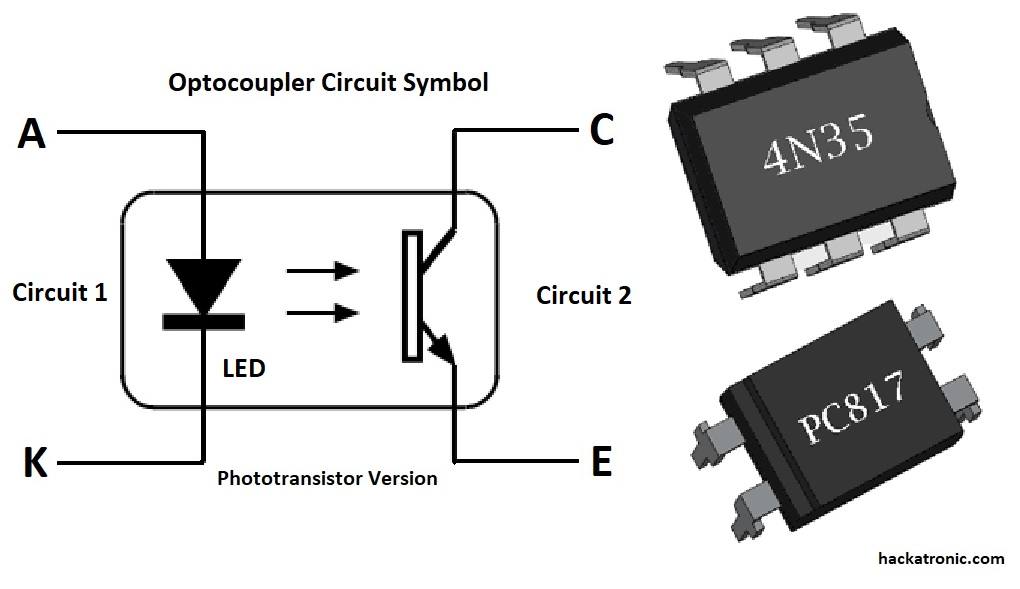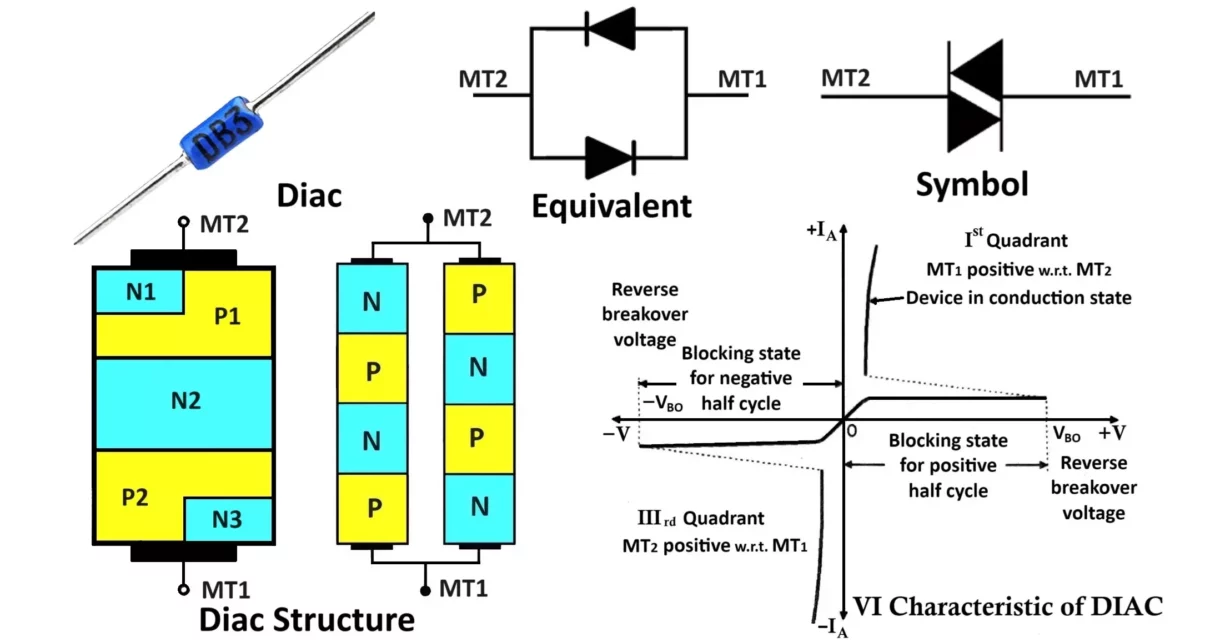In modern electronics, signal isolation between different parts of a circuit is crucial for protection, noise reduction, and system stability. Optocouplers, also known as optoisolators, play a vital role in achieving this electrical isolation while allowing signal transmission. This article provides a thorough exploration of optocouplers (Optoisolator / Photocoupler), including their construction, working principles, advantages, […]
Power Electronics
Difference Between D-MOSFET and E-MOSFET Explained
This article is on MOSFETs (Metal-Oxide-Semiconductor Field-Effect Transistor), covering the difference between D-MOSFET and E-MOSFETs with construction, working, advantages, disadvantages, and applications. MOSFETs are the most common types of Field Effect Transistors (FETs) in Modern electronics. It functions as a voltage-controlled device and delivers high input impedance along with fast switching speed. MOSFETs are the […]
Difference Between SCR, DIAC and TRIAC
In power electronics, the SCR, DIAC, and TRIAC are three common semiconductor devices that are very useful in electric power control and conversion applications. Though they all belong to the thyristor family, their operation, structure, and applications differ significantly. Here’s a detailed explanation of SCR (Silicon Controlled Rectifier), DIAC (Diode for Alternating Current), and TRIAC […]
What Are Optoisolators and Optocouplers, How Do They Work?
Optoisolators and Optocoupler sound very similar and they are the same in terms of workings and other features let’s see what are optoisolators and optocoupler. There are some differences due to which they are given different names. Photocoupler is another name of the optocoupler. An optocoupler or photocoupler and an optoisolator are semiconductor devices that […]
Diac Symbol, Construction, VI Characteristics and Applications
The Diac is basically a two-terminal device. Here we will discuss the symbol, construction, VI characteristics, advantages, disadvantages and applications of Diac. It is such a combination of semiconductor layers that allows triggering in both directions. The Diac is used as a triggering device for the TRIAC circuits. What is a DIAC? A DIAC (Diode […]
